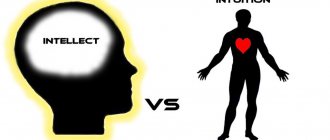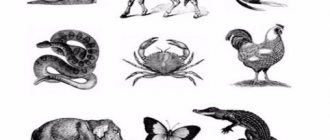Suggestive psychotherapy uses suggestion to eliminate mental difficulties in a person. Because in this case, information is perceived uncritically and without subjective personal processing, which allows you to safely replace negative thoughts and feelings with positive ones. Some scientists still have doubts about this method's effectiveness, but numerous results suggest otherwise.
The main feature of suggestive psychotherapy is that the specialist must seek an individual approach to each person. Because only in this case can a significant effect be achieved from treatment.
Articles on the topic
- What is professional stress, its main signs and types 08/29/2021
- Self-analysis and self-assessment of a teacher’s professional activity as the main criteria for his work 08/13/2021
- What is the role of self-esteem in choosing a profession 08/13/2021
- What does success in business depend on and how not to lose it 07/12/2021
If during the analysis it was possible to detect a person’s suggestibility, then in this case it will be quite simple to cure him with the help of specially selected convincing phrases.
General psychotherapy
1.1. History of the development of the doctrine of hypnosis and suggestion
The use of such amazing and still insufficiently studied states of the human psyche, such as suggestibility and hypnosis, has its roots in the prehistoric past. Suggestion in the waking state and especially in a state of hypnosis was used by priests and shamans, leaders and generals, healers and mystifiers.
One of the most ancient sources on healing methods - the Egyptian Ebers papyrus (XVI century BC) - contains a description of 900 prescriptions for healing herbs and potions. But the most remarkable thing is the beginning of the papyrus, which sounds something like this: “The words that should be pronounced clearly and uttered as often as possible when applying medicine to diseased members in order to destroy the suffering that has afflicted them: “Isis, who freed Osiris, who delivered Horus from the ill-fated deeds of his brother Set, who killed his father Osiris, O Isis, great goddess of spells! Free me from everything evil, from pain and malicious actions, free me from the god and goddesses of suffering, from death, from what has penetrated into me...” Throughout the text of the papyrus, the idea of the need to accompany the adoption of each medicinal remedy with an appeal to the gods and spirits is persistently conveyed. For example, when taking medicine internally (drinks, powders), you should say the spell: “Help! Go and drive out what is in my heart and my members.
Spells are beneficial when accompanied by medicines, and medicines are beneficial when accompanied by spells.”
The ancient priests also used suggestion in a state of hypnosis. In the Greek temple dedicated to the healing god Asclepius, there was a special room - the abaton, where pilgrims, having gone through preliminary complex procedures for worship, were immersed in an artificial sleep, during which they heard the voice of Asclepius. It is characteristic that on the walls of the temple, made up of huge stone slabs, inscriptions were carved with a detailed description of the miraculous healings that took place in the temple. This technique, which enhances suggestion, is still used by many psychotherapists today.
One of the most skillful ancient psychotherapists, according to the books of the New Testament, was Jesus Christ. Chapter VIII of the Gospel of Matthew describes how Christ healed two “very fierce” people by transferring demons from them into a herd of pigs: “And he said to them: Go. And they went out and went into the swine herd. And behold, the whole herd of swine jumped down a steep cliff into the sea and perished in the water” (verse 32). Chapter IX (verses 27–35) tells of the healing of the blind and dumb by the word. The Gospel of Luke (chapter VIII) records the instantaneous healing of a woman who had suffered from bleeding for twelve years (verses 43–44).
It is also surprising that Jesus himself understands the power of suggestion and self-hypnosis. He says to people coming to him for healing: “According to your faith, be it done to you.”
Suggestion and self-hypnosis are widespread in Eastern countries, especially in India. The Swiss ethnographer Stoll in his book “Hypnosis and Suggestion in the Psychology of Peoples” talks about how the yogi Harid, through self-hypnosis, plunged himself into a state close to suspended animation, and stayed in this state in a wooden box without food and water for 40 days.
The belief in the powerful miraculous power of spells is also great in India. Here is one of them, taken from the secret book of the brahmanas “Atharva Veda”: “Wounds on the body, disappear. These are 55, or 67, or 99 sufferings that all disappear.” At the same time, the brahman sways in time with the spell and burns a certain number of leaves of the medicinal plant on the fire. The spell has a healing effect if cast 70 times.
Suetonius and Tacitus testify that the Epirus king Pyrrhus and the Roman emperor Vespasian healed by touching the big toe of the right foot. The kings of France and England healed their subjects by laying on of hands.
Thus, many psychotherapeutic techniques were spontaneously accumulated. The problem was their scientific interpretation.
* * *
The doctrine of hypnosis is inextricably linked with the name of the Viennese physician Franz Anton Mesmer
(1734–1815).
He was one of the most educated people of his time. He had three diplomas: doctor of medicine, law and philosophy. Mesmer played music with Wolfgang Amadeus Mozart and was friends with his father, Leopold Mozart. Occasionally, in his free time from science and music, Mesmer practiced as a doctor. Using a magnet as a therapeutic agent, introduced into practice by Paracelsus at the beginning of the 16th century, Mesmer unexpectedly discovered that the therapeutic effect in a certain category of patients also occurs in those cases when, instead of a magnet, he touches them with his hand. From this he concluded that the healing power does not lie in the magnet, as Paracelsus claimed, but in the hands of the healer. His own discovery puzzled Mesmer, but as a conscientious scientist, he began to look for an explanation for this phenomenon. As a result, he created a theory, the essence of which boiled down to the following: the Universe is permeated with a special kind of invisible substance - magnetic fluid (from the Greek fluidas -
flowing), and individual, especially gifted individuals (Mesmer included himself among them) have the ability to “accumulate” in themselves magnetic fluids, and then directly or through special devices transfer them to other people.
To treat the sick, Mesmer designed special “bake” (vats filled with iron filings). Holes were made in the lid of each vat, from which movable iron rods protruded. The patients were positioned around the bake, grasping the rods and each other, forming long chains. Mesmer himself came out in purple clothes and “magnetized” the vats by touching them with a crystal rod. During the session, gentle music played. The patients brought themselves to a state of “crisis”, during which they cried, screamed, and writhed in convulsions. Then they were transferred to a special room, where they fell asleep, and when they woke up from sleep, they felt freed from suffering.
Mesmer cannot be called a charlatan. He was deeply confident in the correctness of his theory, which he considered “physiological and rationalistic” (Shertok, 1972). The doctor was convinced that the existence of the fluid was as real and material as, for example, the action of a metal magnet. However, Mesmer argued that the “animal magnetism” he discovered differed significantly from the action of a magnet, and vaguely guessed that in addition to fluids, “some forces” also affected the patient. Hence all these rituals with a camisole, music, a staff... We should not forget that in the 18th century, the century of encyclopedists, superstition and obscurantism still flourished, and witches were still burned at the stake (the last one was burned in 1782).
In 1774, Mesmer’s theory of “magnetic fluids” was considered at a joint meeting of the French Academy and the Royal Society of Medicine, in which such prominent scientists as Lavoisier, Franklin, Jussier, and Wiley took part. The verdict of the expert commission was quite harsh and categorical. "Animal magnetism" was condemned. The healing effect (and it was impossible to deny) was attributed not to fluids, the existence of which was questioned, but... to the imagination. “Imagination without magnetism causes convulsions,” the conclusion said, “and magnetism without imagination causes nothing.” Not only Mesmer’s theory was condemned, the method of treatment itself was also condemned, which, according to academics, “negatively affects the moral foundations of society.”
In 1776, Mesmer moved to Paris, sought an audience with King Louis XVI of France and enlisted the support of Queen Marie Antoinette. Pressure is being put on the scientific Olympus, but the Academy remains adamant in its decision. During the years of the French Revolution, Mesmer emigrated to Switzerland, where he died in oblivion and obscurity in 1815. But the seeds he sown bore fruit. In 1882, the French Academy, under the influence of Charcot’s works, recognized the hypnosis treatment method as scientifically based, that is, it essentially approved what it had decisively rejected a hundred years earlier.
In 1818, Mesmer's admirer Chestanier de Puysegur, practicing “magnetic” passes, discovered the deepest stage of hypnosis - somnambulism.
By magnetizing the patient, Puysegur makes sure that the patient is immersed in a state of “magnetism” not only as a result of touch, but also under the influence of a word, an order. It turns out that fluids have nothing to do with it, and the main active factor is suggestion?
However, the beginning of the scientific study of hypnosis should still be considered the research of the English surgeon James Braid
(1795–1860).
While attending the sessions of the famous French magnetizer Charles La Fontaine (grandson of the famous fabulist), Braid noticed that the experimental subject, who had fallen into a state of “magnetism,” could not open his eyes, move his hand, and generally resembled a sleeping person. Braid decides to continue the “magnetization” experiments himself, but uses his own original method. He invites the patient to fix his gaze on any object, for example, on the neck of a bottle, and not think about anything other than sleep. The results of the experiments exceeded expectations. All patients, after several minutes of general relaxation and fixation of gaze, fell into a state that Braid called hypnosis
(from the Greek
hypnos -
sleep).
Braid published the results of his experiments in the book Neurohypnology. He viewed hypnosis as a special type of sleep that occurs as a result of fatigue of concentrated gaze and attention, muscle relaxation and slow breathing.
To explain the mechanism of hypnosis, Braid used the hypothesis of monoideism,
or the state of being overwhelmed by a single thought. This state, he believed, occurs in a hypnotized person as a result of concentrating his gaze and thoughts on one object.
Braid's theoretical explanation of hypnosis seems somewhat naive in our time, but the practical observations he made have not lost their relevance.
Braid was one of the first to note the fact that people's susceptibility to hypnotization is hypnotizability.
- is not the same and depends not so much on the personality of the hypnotist, but on the state of the patient’s nervous system. He drew attention to the fact that the depth of hypnosis can be different for different people, and sometimes changes during the same session. Braid became convinced of the special power of suggestion in a state of hypnosis and used this effect as a method of treating hysterical paralysis, seizures, and amorosis. But the scientist’s main merit is that he was the first to look at hypnosis as an earthly, material phenomenon caused by natural, physiological reasons.
After Braid's death, the center of the study of hypnosis moved to France. More precisely, two centers for the study of hypnosis were formed in France: the first in Salpêtrière (near Paris) headed by the world famous neurologist and psychiatrist Jean Martin Charcot
(1825–1893) and the second in Nancy, led by
Hippolyte Bernheim
(1837–1919), a professor at the university's therapeutic clinic.
The reason for a new wave of interest in hypnosis in France was the fact that Charcot was entrusted with testing the effectiveness of metal therapy, which had become fashionable.
Thus, the French researcher Burke noticed that a patient who, in a state of somnambulism, touched the copper door handle fell into catalepsy. This did not happen if a rubber glove was previously placed on the door handle. In 1876, Burk, having accumulated a large amount of factual material, turned to the president of the French Biological Society, and he appointed a commission to study these phenomena. It also included Charcot. The commission confirmed the facts obtained by Burke, but was unable to give them a convincing theoretical explanation. While working on the commission, Charcot became interested in hypnosis as a method of influencing patients. His attention was drawn to the mechanism of the occurrence of neuroses, especially hysteria, and the fact that many symptoms of hysteria in a state of hypnosis literally disappeared “before our eyes” or, on the contrary, appeared, led the scientist to the conclusion that hypnosis is nothing more than artificially induced hysterical neurosis.
Charcot developed his “shock” method of hypnotization. The patient was led into a dimly lit room. Suddenly, a deafening sound of a gong was heard. A bright light flashed before the eyes, and the patient fell into a state of hypnosis. Charcot identified three stages of depth of hypnosis: catalepsy, lethargy
and
somnambulism.
Charcot's main merit is, perhaps, that he attracted the attention of the world scientific community to hypnosis. Under his influence, such prominent Parisian scientists as neurologists Paul Riget and Gilles de la Tourette, J. Babinsky, Charles Feret, psychiatrist Pierre Janet, pathophysiologist Alfred Binet and many others began to study hypnosis.
Representatives of the Nancy school (Bernheim, Dumont, Boni, etc.) believed that hypnosis is a psychological phenomenon associated with suggestion. They viewed hypnosis as the result of the fact that the hypnotized subject succumbs to the suggestive influence of the hypnotist, without revealing sufficient criticism of the resulting suggestion. The statement of the Nancy people is widely known: “There is no hypnosis, there is only suggestion.” At the same time, they categorically denied the painful, hysterical nature of hypnosis.
A long and rather heated scientific discussion ensued between the Parisian and Nancy schools of hypnologists. Ultimately, at the first International Congress of Physiological Psychology, held in Paris in 1889, the Nancians won a landslide victory.
It should be noted, however, that neither school avoided mistakes. If Charcot, identifying hypnosis with hysteria, limited the scope of its therapeutic use, then Bernheim and his supporters, identifying the concepts of hypnosis
and
suggestion
, denied the independence of hypnosis and its existence outside the sphere of verbal influence.
From a modern point of view, it should be recognized that, although hypnosis and suggestion are interrelated, they are nevertheless different phenomena from each other, if only because not only humans, but also animals can be immersed in hypnosis, while the perception of verbal suggestion is inherent only person.
It would be wrong to think that the study of hypnosis in the 60-80s. XIX century practiced exclusively in England and France.
Swedish psychotherapist Otto Wetterstrand made a major contribution to the study of hypnosis.
who published the book “Hypnotism and its Application in Medicine” (translated into Russian in 1893), in which he describes the features of the treatment of somatic diseases with hypnosis (heart disease, stomach disease, asthma) and for the first time raised the question of the treatment of chronic alcoholism with hypnosis.
Levenfeld played a significant role in the development of the doctrine of hypnosis
and
Moll.
Simultaneously with the works of Charcot, Bernheim, Boni, professor of physiology at Kharkov University Vasily Yakovlevich Danilevsky
(1852–1939) in numerous experiments showed the possibilities of hypnotic effects on animals. Since 1874, he conducted research on a wide variety of representatives of the animal world: frogs, lizards, snakes, newts, turtles, crocodiles, crayfish, sea crabs, lobsters, lobsters and cuttlefish, fish and birds, and in 1891 he made a report at the IV Congress of the Society of Russian Doctors in Moscow, where he convincingly proved the unity of the nature of hypnosis in humans and animals, thereby dealing a significant blow to the Nancy school.
At the same congress, a student and follower of S.S. gave a report on “Therapeutic techniques of hypnotism.” Korsakova A.A. Tokarsky
(1859–1901). A passionate supporter of the introduction of hypnosis into medical practice, he said in his report: “It would be ridiculous to think that hypnotism grew somewhere on the side, behind the doors of the temple of science, that it was a foundling raised by ignoramuses. One can only say that the ignoramuses coddled him enough and grabbed him with their hands.” More than a hundred years have passed, but these words are still relevant today.
In the early 80s. XIX century A.A. Tokarsky first began teaching a course in physiological psychology and hypnotherapy at the Faculty of Medicine of Moscow University. It is known about the favorable attitude of A.A. Tokarsky to folk healers and church ministers who used methods of direct and indirect suggestion for medicinal purposes. In the 70-80s. XIX century in the village of Nakhabino (near Moscow), priest Sergius of Perm healed chronic alcoholics: he took a “pledge” from them not to drink alcohol and at the same time forced them to kiss the cross and the Bible. In the sermon preceding the ritual, Father Sergius convinced that a Christian who began drinking again after a “divinely inspired vow” was committing a grave sin. In this way, he cured about 30 thousand people who created communities of “tea drinkers.”
A.A. Tokarsky specially went to see how Father Sergius healed alcoholics, reacted very approvingly to his experience, and when he returned, he said: “I saw nothing there except suggestion and hypnosis, no “miracles”, no “will of God” - ordinary psychotherapy. "by faith." He talked about all this in his book The Therapeutic Use of Hypnotism (1890).
Vladimir Mikhailovich Bekhterev played a major role in the development of domestic and world psychotherapy
(1857–1927).
V.M. was born. Bekhterev on January 20, 1857 in the village of Sorali, Elbuzhsky district, Vyatka province, in the family of a police officer. In 1873 he entered the famous Medical-Surgical Academy. At the same time, there was some curiosity. It turned out that the huge guy who looked like Ilya Muromets was not yet 17 years old, and the doors of the academy were closed in front of him. However, Volodya Bekhterev was not so simple. He went home to the head of the academy, Professor Ya.A. Chistovich and managed to convince him that it’s not just about the number of years lived...
This man's ability and hard work were truly legendary. As a student at the academy, he managed to attend the war with the Turks for the liberation of Bulgaria, participated in several student strikes, and was one of the organizers of the student boycott declared on physiology teacher I.F. Zion, because of which he made himself an ill-wisher for the rest of his life in the person of I.P. Pavlov (in those years - assistant to I.F. Tsion).
In 1878 V.M. Bekhterev graduated from the Academy and was retained as a trainee doctor at the Department of Psychiatry, which was headed by I.P. Merzheevsky, student and successor of the founder of Russian psychiatry I.M. Balinese.
At the age of 24, Bekhterev brilliantly defended his doctoral dissertation, and at the age of 27 he was sent abroad. While on a business trip in Leipzig, in December 1884 he received an official invitation, signed by the Minister of Public Education Delyanov, to take the chair of psychiatry at Kazan University. And again the character of the scientist emerges. Before giving his consent, he sets three conditions: to organize a mental illness clinic in Kazan, to establish an additional position as an assistant to the department, and to extend the period of his business trip for the purpose of an internship at the Charcot clinic. All requirements of V.M. Bekhterev were satisfied. Until the spring of 1885, he interned at the Salpêtrière, became interested in hypnology, managed to visit the “brain expert” Meynert in Vienna, and left for Kazan in the fall. There, Bekhterev became an active advocate of treatment with hypnosis and suggestion.
In 1893, at the age of 36, V.M. Bekhterev is appointed head of the department of mental and nervous diseases of the Military Medical Academy, replacing I.P. Merzheevsky.
I.P. Merzheevsky was an excellent clinician and morphologist, but he was skeptical about psychotherapy, especially hypnosis treatment. Perhaps the reason for this was the unhealthy “hypnotic boom” that swept across Europe and reached its apogee in Russia by the mid-80s. XIX century
I.P. Merzheevsky achieved a decision from the Medical Council on the careful use of hypnosis in medical practice, according to which it was possible to resort to hypnosis only with the permission of the administration and always in the presence of a second doctor.
Having taken the department, V.M. Bekhterev insisted on the abolition of these restrictions. He himself widely used suggestion under hypnosis in treating patients. When Bekhterev was asked to give an assembly speech at the anniversary year of the Military Medical Academy in 1898, he dedicated it to the role of suggestion in public life. Later, in 1903, this speech was published as a separate book, “Suggestion and its role in public life.”
Some points expressed by V.M. Bekhterev in this book are still relevant today. First of all, he clearly distinguishes between concepts such as persuasion, suggestion, and hypnosis.
Belief, in his opinion, enters the sphere of mental activity through personal consciousness, is assimilated by us through reflection and meaningful processing, becoming a lasting achievement of our Self.
“Suggestion,” the scientist asserted, “reduces to the direct instillation of certain mental states from one person to another, an inoculation that occurs without the participation of the will of the receiving person and often even without clear consciousness on his part.”
Hypnosis, according to V.M. Bekhterev, is “nothing more than an artificially induced modified normal sleep,” in which, however, contact with the hypnotist is maintained. “The hypnotized person enters into a special state of passivity, which is why suggestion has such a suppressive effect on him.”
Suggestions can take the form of orders, slogans, personal example... “The command acts not only by the force of fear for disobedience, but also by suggestion or instillation of a known idea... An example can also act as a suggestion, leading to completely involuntary and unconscious imitation.” First, ideological indoctrination, then drill, developing passive obedience, then the order: “Go and kill!” He goes and kills. This is the mechanism of behavior of soldiers in war.
“Suggestion,” says V.M. Bekhterev, “acts by directly instilling mental states, that is, ideas, feelings and sensations, without requiring any evidence at all and without the need for logic... Suggestion acts directly on the mental sphere of another person through fascinating and excited speech, gestures, and facial expressions.”
The ways of transmitting a mental state through suggestion are more numerous and varied than the ways of transmitting thoughts through persuasion. Therefore, “suggestion is a much more common and often more powerful factor than persuasion.”
Suggestion, as a rule, is combined with mutual suggestion and self-hypnosis, which can lead to mental epidemics. Their character is largely determined by the prevailing views of a given period. So, for the 16th century. “epidemics” of witchcraft were characteristic of the 17th century. - demonic possession, obsession, for the 19th century. - delusions of grandeur and persecution.
In the time of Bekhterev, they believed in spiritualists, in “spirits,” and the activity of hoaxers and charlatans did not subside. Bekhterev called inspired ideas “psychic microbes.” “There is no doubt,” he said, “that... the mental microbe in certain cases turns out to be no less destructive than the physical microbe, prompting people from time to time to devastating wars and mutual destruction, stirring up religious epidemics and causing, on the other hand, the most severe persecution of new epidemically spreading teachings.”
Throughout his conscious and fruitful life, the scientist contributed to the introduction of hypnosuggestive therapy into the practice of medicine. And when in December 1927 V.M. Bekhterev, at that time a recognized leader in Russian neuropathology and psychiatry, was invited to speak at the First All-Union Congress of Neuropathologists and Psychiatrists; he made a report on the collective treatment of alcoholism patients by suggestion under hypnosis.
The triad of conditions that determine the essence and effectiveness of this method of treatment (Bechterev's triad) has not lost its relevance today. It includes:
• explanatory conversation of a rational plan;
• suggestion in hypnosis;
• training group members in self-hypnosis formulas.
This report by V.M. Bekhterev did it 30 hours before his death.
* * *
The history of Russian psychotherapy, naturally, is not limited to the names of V.Ya. Danilevsky, A.A. Tokarsky, V.M. Bekhterev. V.N. made a great contribution to the development of pathogenetic psychotherapy. Myasishchev, activating therapy - S.I. Constorum, psychosomatic therapy - K.I. Platonov, emotional stress therapy - V.E. Rozhnov. Behind each of these names are dozens of students.
Domestic psychotherapy is unthinkable without such names as E.N. Dovbnya, F.E. Rybakov, V.N. Khoroshko, P.P. Podyapolsky, A.I. Yarotsky, A.F. Lazursky, Yu.V. Kannabikh, V.M. Narbut, F.D. Netkachev, V.A. Gilyarovsky, M.P. Kutanii, M.V. Strelchuk and many others.
The history of Russian psychotherapy is essentially the history of the development of the doctrine of hypnosis and suggestion.
Non-directive methods of psychotherapy, including psychoanalysis by Sigmund Freud, found fertile soil in Russia at the beginning of the 20th century, in the 1930s. were condemned as metaphysical, alien to the materialistic worldview, and were tabooed. “The baby was thrown out with the bathwater.”
It should be noted that Freud himself played a negative role in the history of the development of hypnology, making the same mistake as orthodox hypnologists in relation to psychoanalysis
Freud was at first interested in hypnosis, went to study its technique with Charcot and Bernheim, but then, taking the position of psychoanalysis, he anathematized hypnosis. In 1910, from the department of Clark University in America, he said: “Hypnosis soon became unpleasant for me, as a capricious and, so to speak, mystical means. Only when you eliminate hypnosis can you replace resistance and repression and get a truly correct idea of the pathogenic process.” The rapid spread of the ideas of psychoanalysis in the West and the authority of Freud played their role. Interest in hypnosuggestive therapy in Western countries has noticeably decreased and only in recent decades has begun to revive again.
By a decision of the British Medical Association in 1955, hypnosis was completely rehabilitated in England. In 1958, the American Medical Association officially included hypnosis as a medical therapy. In 1955, the Medical-Surgical Encyclopedia was published in France, in which a separate chapter is devoted to hypnosis (volume “Psychiatry”). However, only in 1965, after a 65-year break, the Third International Congress on Hypnosis was held in Paris.
This does not mean that psychotherapy in the West is completely focused on suggestion and hypnosis, but time and common sense are promoting an increasing convergence of directive and non-directive methods of psychotherapy.
Suggestive treatments
We have analyzed Ericksonian hypnosis and autogenic training in detail for you, let's see what the suggestive immersion method is and how it differs.
Used not only for treatment, but also for personal growth, language training, and special subjects, such immersion represents several series of intensive classes in which, using a combination of special techniques, one can work through complex attitudes and learn volumes of information that are incomparable with the results of ordinary psychotherapeutic and pedagogical sessions. .
The key to the success of suggestive methods of psychotherapy is respect for the hypnologist and his authority. We cooperate with leading hypnologists who have not only professionalism and reputation, but also the strong charisma necessary to quickly establish rapport.
Suggestive techniques are diverse, revealing the mechanisms of action can reduce their effectiveness, so let's better turn to the results of such influences.
Impact on consciousness through self-suggestion
Most often, doctors recommend using the method developed by the French pharmacist and psychologist Emile Coue. The treatment proposed by the doctor allows you to replace harmful psychological attitudes with positive ones that have a beneficial effect on the body. The healing formula consists of simple and positive statements: “Every day I get better and better!”, “I am full of strength and energy that heal my body!”, “I am healthy and feel great!”.
Don’t be embarrassed if the phrases sound somehow childish and not serious. Since at this moment a person turns to his subconscious, the words need to be selected as simple as possible. The process of suggestion should be effortless; if every day a person forces himself to use the self-hypnosis method, nothing good will come of it.
Phrases are selected during a consultation with a psychotherapist. Depending on the problem, a specialist will help you correct the resulting text.
It should be short - 2-3 sentences maximum. If we are talking about the fight against harmful addictions, then in this case the phrases used for self-hypnosis may take a more detailed form: “My decision to quit drinking is final and not subject to discussion. No matter how my friends persuade me and no matter what arguments they give, I will still remain in my opinion and will not drink! My decision is final!”
The self-hypnosis session does not last very long - 4-5 minutes. The course of treatment is from 1 to 2 months. During the session, the person should take a comfortable position and completely relax. Phrases should be repeated out loud several times in a row. This should be done slowly and without getting hung up on the content.
Preparing for hypnosuggestive therapy
You can use hypnotic methods of suggestion only after all the necessary conditions have been created for this procedure. At the initial stage, the doctor tells the patient why he plans to use such therapy for his treatment, describing in detail everything that will happen during the session. Many people categorically refuse hypnosis, fearing other people's interference and trying to protect their consciousness from it.
Without fail, the psychotherapist must conduct a suggestibility test, which will determine whether the patient is amenable to hypnosis.
To do this, the specialist will try to instill in the person certain experiences or feelings. It is very important that the attending physician inspires confidence in the patient, otherwise the procedure will not succeed.
A specialist who works with hypnotic techniques must be able to win over the patient, causing a feeling of calm. The timbre of his voice and manner of speaking are important. Whether the hypnosis session will be successful largely depends on the intonation, expressiveness and volume of his voice. Hypnosuggestive therapy is carried out in a room specially designed for this purpose, where a comfortable environment is created that helps the patient relax and trust the doctor.
Belief
This process is carried out while the patient is awake. This is probably why it is considered more complex in terms of influence. The specialist needs to find the right approach, “impulse points” and correctly influence a person’s emotions and consciousness, while bypassing the control of the mind.
There are open, camouflaged and rational beliefs. The first involves a direct message from the psychotherapist that he is influencing the patient and wants to make a certain substitution of concepts in his mind. Phrases here are usually constructed like this: “I will count to three and it will happen...”. However, human consciousness cannot always be caught on such hooks.
Rational beliefs include certain logical concepts and explanations that the specialist uses. The standard phrases here sound something like this: “You are forbidden (should not) do this because...”. This type of suggestion also does not work with all patients.
Suggestive psychotherapy most often uses hidden beliefs. They include three techniques: sequence of phrases until agreement, surprise and creative moments, and banality.
The first technique involves a set of phrases that are pronounced by the psychotherapist with an emphasis on the patient’s consent and its manifestation in the form of body responses (relaxation, restoration of even and calm breathing). For example: “You came to me... you are now sitting in a comfortable chair... you are relaxed... you have a problem... but after our session you will feel much better.” The first part of a series of phrases is aimed at the patient's consent, and the words “you will feel better” are persuasion.
Surprise and creative moments are pure improvisation of a psychotherapist who sees a patient in front of him who requires a special approach.
A banality is a set of phrases that the patient cannot refute. After the next confirmation of the “banal message,” the patient’s consciousness automatically greets the conviction positively. For example: “When a person is comfortable, he is relaxed. Each person solves problems in their own way. Your symptom will disappear once your unconscious mind understands that you are capable of solving problems constructively.” This may also include proverbs and sayings that are related to the topic of the session.
Thus, in a number of seemingly ordinary phrases with a confirmation vector, the specialist uses the hook of suggestive influence - persuasion. Contraindications here are taking psychotropic medications and emotional agitation.
Features of autosuggestion
An important branch of suggestive psychotherapy is self-hypnosis. A feature of autosuggestion is that the patient inspires himself with the thoughts and feelings recommended by the doctor. The goal of autosuggestion should be considered to be the relief of painful manifestations, as well as strengthening the will and confidence that recovery will occur in the near future.
Typically, sessions are held no more than three times every seven days. The patient should also practice independently at home.
After training, during which complete muscle relaxation is achieved, a person will be able, with the help of volitional effort, to concentrate his attention on thoughts containing information important for a speedy cure
The method of suggestive psychotherapy is absolutely safe. Most often it is used to cure a person from severe alcohol addiction. After the sessions, the patient feels nauseated at the mere thought of vodka.
Features of the technique
Suggestive psychotherapy involves a special formula of suggestion. Often, a specialist in the field of psychotherapy uses persuasive expressions aimed at a specific patient. The content of these expressions reflects measures to treat a person who has sought medical help.
The specialist pronounces the desired phrase clearly and distinctly, while maintaining a low tone. The meaning of each word is deep, the phrase looks harmonious and well-structured. Only in some cases does the doctor change his tone and resort to rather harsh statements.
Patient's condition
After the first session of hypnosuggestive psychotherapy, a person notes that his physical, emotional and mental state changes noticeably for the better. He becomes more cheerful and expresses optimistic thoughts.
At the second stage, the doctor proceeds directly to suggestion, the purpose of which is to stop one or another abnormal manifestation.
Wake up the patient
The final stage of hypnosuggestive psychotherapy is awakening the patient. In ninety-nine cases it occurs without any complications.
The session ends with the doctor instilling in the patient that after he wakes up, he will feel well rested and have a great night's sleep.
The effectiveness of suggestive programs
Suggestive techniques are used for most mental disorders of a non-psychotic level:
- neuroses;
- neurasthenia;
- hysterical disorders;
- sleep disorders;
- as well as for psychosomatic diseases, conversion disorders, i.e. such diseases of the body, the root cause of which is in the head: hysterical/conversion paresis, paralysis, deafness, blindness, dumbness;
- somatization disorder;
- somatoform disorder of the autonomic nervous system (modern name VSD);
- persistent somatoform pain disorder.
Being a directive technique, the suggestive approach is not recommended for people whose main problem is avoiding responsibility for their own lives and decisions. In general, suggestive technologies are safe and highly effective when used correctly.
Suggestive therapy is often used not as monotherapy, but in combination with methods and approaches of other psychotherapeutic schools. The final decision on the tactics of psychotherapeutic influence and the methods used is made by a specialist or a council of specialists from the Alliance Medical Center.
Specialists
Ashmeiba Nino Anatolyevna
Psychotherapist, psychiatrist
doctor of the highest category
more than 15 years of experience
35 positive reviews
- Suggestive therapy
- Reconstructive-personal psychotherapy
- Rational psychotherapy
- Individual psychotherapy
Make an appointment
Krylatykh Victoria Yurievna
Psychotherapist, psychiatrist
more than 15 years of experience
114 positive reviews
- Individual psychotherapy
- Family psychotherapy
- Neurolinguistic programming
- Cognitive behavioral psychotherapy
Make an appointment
If you find it difficult to choose a psychotherapist, call us or fill out an application. We will help you find a specialist with whom you will feel comfortable.
Fill out an application
What is suggestion?
Suggestion is (Latin suggestio - suggestion, advice) - a special kind of verbal and non-verbal influence on the human psyche, to introduce attitudes, programs into the subconscious for manipulative or therapeutic purposes. As a result of suggestion:
- change of state;
- encouragement to action.
Suggestion is involved in many areas of society:
- medicine;
- psychology, psychiatry;
- Show Business;
- works of art, fiction, music;
- advertising;
- MASS MEDIA;
- jurisprudence;
- military structures;
- religion;
- policy;
- sport.
Suggestion is divided into:
- Autosuggestion
is self-hypnosis. Pronunciation of attitudes, affirmations, texts by a person to himself. Autogenic training. - Heterosuggestion
is the influence of the suggestor (the one who suggests) on the suggestor (the one who is influenced).
Scope and features
In clinical practice, hypnosuggestive therapy is used as follows:
- As an independent method to achieve a calming and normalizing effect.
- To teach self-hypnosis.
- As an additional method in other types of psychotherapy.
Suggestive techniques are actively used in all types of psychotherapy. Thus, an altered state of consciousness is achieved through the relaxing effects of massage. Such work with the body for the purpose of healing is actively used in body-oriented therapy.
Psychoanalytic therapy actively uses methods of concentration and entering a trance to obtain the necessary data.
Hypnosuggestive psychological therapy is actively used by psychotherapists and psychologists to treat:
- depression and anxiety;
- drug, alcohol or nicotine addiction;
- eating disorders;
- overweight;
- sleep disorders;
- gambling addiction;
- phobias;
- post-traumatic stress disorder.
Methods of hypnotic influence and suggestion have been tested in severe irreversible diseases as a means of pain management. With the help of suggestion and self-suggestion, the patient reduces pain and manages it. Such methods are used for burns and difficult childbirth.









